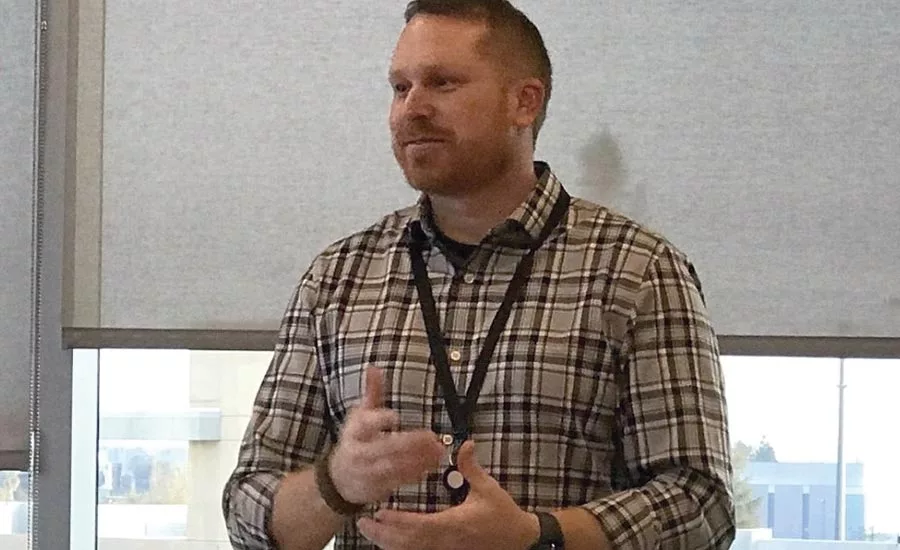The Impact of City Surveillance and Smart Cities
In the infancy of smart cities, there are potential implications to consider too.

With an overall goal of reduced crime, improved safety and better quality of living for citizens in increasingly burgeoning communities, there are many positive outcomes of city surveillance solutions in published case studies across the nation, especially when it comes to targeting specific issues.

“Is it enough to just have the technology? Or, do we have to monitor it? Do we have to maintain it? I think the conversation has to be deeper than ‘We want to do cool stuff with cool gizmos,’” says Scot Walker, Managing Director at Sentinel Resource Group.
Just do a Google search on “smart city” or “city surveillance” or, better yet, both terms together, and you’ll find a multitude of opinions ranging from rapture to lukewarm acceptance to outrage. Most of all, there’s a plethora of questioning what truly integrated, networked smart cities replete with surveillance really mean for John Q. Public.
It’s a fair question, especially considering the fast-arriving advent of a widespread 5G network that will enable faster data transmission and the ability to connect significantly more devices at once. Experts expect this to translate into a drastic increase in the number of IoT devices worldwide; IHS Markit predicts that the number will grow an average of 12 percent each year, reaching a whopping 125 billion IoT devices by 2030.
Cheaper technology coupled with a bigger and faster data pipeline means that a growing number of cities of all sizes will undoubtedly be jumping into the smart city trend. Illustrating this point, HTF Market Intelligence is forecasting a compound annual growth rate of 15 percent in the global video surveillance market, which would reach nearly $106 billion by 2026. And Markets and Markets estimates that the smart cities market, worth $308 billion in 2018, will increase at more than 18 percent every year, with a predicted worth of more than $717 billion by 2023.
Proven Benefits
With an overall goal of reduced crime, improved safety and better quality of living for citizens in increasingly burgeoning communities, there are many positive outcomes of city surveillance solutions, especially when it comes to specific issues.
Challenge: A Crime-Riddled City Hall Area
After investing in improving its downtown area, city officials in Hayward, California, realized that the area around city hall needed further security measures to stop the drug dealing, prostitution, theft and violent crimes going on there. Purchasing solar-powered, deployable video surveillance units saved the city a significant amount of money since power lines would have had to have been trenched in. Even better, the drug dealing came to a rapid halt thanks to camera identification and other crime went down an estimated 60 percent as well.
Challenge: Illegal Dumping
A Bay Area city in California had a big problem: about 200 illegal dumping sites around town where people were dropping their unwanted furniture, chemicals and junk. The dumping was costing the city nearly $1 million a year to clean up, with an average of 50 calls a day from residents.
The solution? License plate readers. The results? Zero service calls in the areas that would-be culprits know they’re being watched. The cessation of illegal dumping has greatly improved residents’ quality of life too.
Challenge: Enhancing Public Safety
The city of Mankato, Minnesota, has complied with its new public safety and property protection initiatives and helped reduce the number of public safety crimes, as well as vandalism incidents. A recent nationally-publicized altercation that took place outside a bar was captured on the city’s surveillance cameras, giving law enforcement evidence that aided in the judicial process.
Challenge: Small Police Department on a Large College Campus
San Jose State University (SJSU)’s police department is responsible for a 19-block campus in downtown San Jose, California, that hosts more than 33,000 faculty, students and staff. Because of limited manpower, the school purchased portable HD video surveillance units with gunshot detection to help the PD monitor the whole campus more effectively and to be able to respond quickly in an active shooter situation.
Potential Benefits
Scot Walker, Managing Director at Sentinel Resource Group, posits that potential benefits include:
- IoT devices helping city planners understand how people move around their communities, enabling them to make more targeted improvements.
- Fire departments being able to tell if a fire is actually a fire before arriving on the scene.
- Police departments being able to maximize their time. For instance, having the ability to send a drone to confirm a situation and get license plate footage before sending officers out.
- The droves of data collection that 5G will enable being collected, studied and analyzed in valuable ways that benefit the public.
- An increasing need for more cybersecurity and physical security roles in municipalities.
Potential Implications
In the quest for safer municipalities, no one can argue that there aren’t significant benefits to smart city technology. But at the cusp of what’s looking like a mad charge down the hill of new and exciting technology, there are implications to consider too, says Walker. “We can do this, but should we? And if we should, then how do we do it? Who do we talk to? Is it the right thing, morally, to do? When we bring technology in, is it an appropriate application? We want technology to keep people safe, but what’s the return on that investment?” he asks.
“As security professionals, we’re supposed to look at risk. What’s the actual risk involved? Are things really worse right now? Sure, they feel worse. But what does the data say? If the data says we’re actually safer now than we were 20 years ago, then do we need all these cameras and profiling?” asks David Farquhar, a security consultant based in St. Louis. “Sometimes the right answer is to accept the risk. We knew it when we took our certification tests, but sometimes we seem to forget that in the real world.”
Some of the complications that widespread use of city surveillance and IoT include:
- More privacy issues: Everyone’s tolerance level for being monitored is different and the increasing use of data and surveillance will lead to more litigation. “I do believe there will be some significant legal challenges about data privacy in the near future,” Walker says.
- Reputational risk: If your enterprise’s cameras capture a crime, what are the ramifications of you allowing the city government to tap into your CCTV? Could this possibly expose you to litigation? And what do you do when someone demands to see your data?
- Defining the network: “What’s going to be fascinating is how this will all be tied together,” muses Walker. “How do business sensors or smart homes feed into the municipality, since the municipalities have the jurisdiction and authority to investigate or to collect this data? How does it all come together in a network?”
- An increased number of data nodes: With IoT comes a whole lot more access points, which equals more potential vulnerabilities. “The challenge is going to be public perception of the use of the data, data privacy, and how do you protect it? How do you, as a municipality, ensure that no one is ever going to misuse this?” says Walker.
- Unused data: Security professionals have been dealing with the problem of unused data that could have great impact if analyzed and applied. Walker foresees municipalities struggling with how to use and prioritize their data.
- New challenges: City employees will need training in how to use this new technology, Walker says. “You start getting into the criminal investigative aspects of smart cities and the plus is that it’s giving them more knowledge on what’s going on, but how do they prioritize the information? How do they respond and mitigate it? And then how do they retain it for evidence?”
- Unanticipated complexities: “When you put up your ante with devices to detect crime, somebody’s got to monitor it, somebody’s got to respond to it, somebody’s got to maintain and fix it, somebody’s got to make sure that the contract and licensing is maintained with the products,” says Walker. “There are a lot of moving parts. We think this technology will solve everything, but it actually complicates things more than people realize. We’ve got to go in with eyes wide open that there is no privacy, and we’ve got to be OK with that.”
Some potential holes in municipality experience and knowledge may create opportunities for security professionals to help fill the gaps in areas like cybersecurity, data analytics, training and risk analysis.
Discussing these complexities that the predicted swell in city surveillance and smart cities may spawn could prove to be beneficial in the long run. After all, we’re still in the very early stages.
“The conversation needs to be holistic and what I call ‘360,’” says Walker. “You’ve got to look up, down and around because it’s 2019 and Equifax got hacked, and the government got hacked, and all these bad things are happening around the world, and it’s so much easier for somebody in Kazakhstan to reach out and touch somebody in Plano, Texas.”
Looking for a reprint of this article?
From high-res PDFs to custom plaques, order your copy today!







